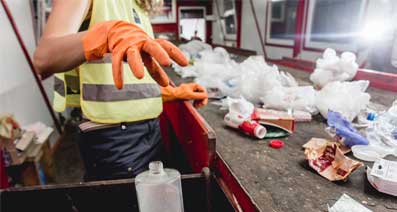The way in which we dispose of rubbish has changed and we no longer take our waste to landfill in the way that we used to. These days, the way in which waste is collected and disposed of is complex because we are now looking at ways in which we can change our approach and do more to recycle.
However, how do we determine where our rubbish should be taken to and what we can recycle? Also, what waste can be used to create energy and what does have to be placed in landfill? So, this is where waste transfer stations come in because they provide a temporary base for waste where it is stored and sorted, ensuring that it is taken to the right places.
The Benefits of a Waste Transfer Station
Waste transfer stations are now an integral part of the way in which we dispose of waste. Our population is growing and we are generating more waste, hundreds of millions of tonnes of waste every year. Each year, the average household generates around one tonne of rubbish.
So, collectively, this is a lot of waste, all of which needs to be sorted. So, the most important benefit of a waste transfer station is that it makes it possible to sort waste efficiently, ensuring that we can recycle as much of it as possible. There are more benefits but these waste transfer stations are located locally which means that the time it takes to transport waste is reduced and that also means that costs are reduced too. Furthermore, it helps to reduce the environmental impact that comes with transporting waste over long distances.
So How Do They Work?
So, as we have mentioned, waste transfer stations are used to help sort waste. Trucks will transport waste to them where it is weighed before it is then tipped so that it can be sorted.
The sorting process is especially important but all hazardous waste will be removed and separated as quickly as possible. This will help to prevent the hazardous waste from contaminating any other waste. All remaining waste is then segregated which is done by machines and hand. This waste will be split into different groups based on the material as well as how easy it is to recycle and its size and level of hazard.
Once the waste has been put into different groups, the waste can then be passed onto the next stage which is to either be recycled, placed in landfill or used to create energy.
The aim is to reuse as much of the waste we generate as possible. So, this will be dependent on its recyclability and whether it can be used to create energy. We are now placing more of a focus on becoming more environmentally friendly and it is not possible to recycle so much more than we have done in the past. This means that we are reducing our impact and helping our planet at the same time.
